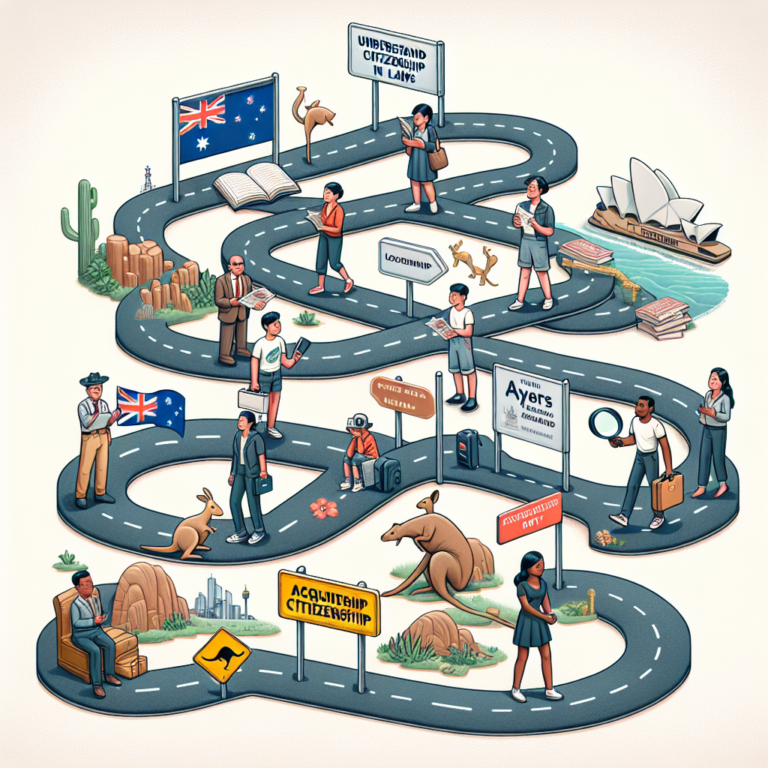Australian nationality law
Australian nationality law determines who is and who is not an Australian citizen. Navigating through the maze of regulations concerning citizenship can be complex, with various pathways and requirements for those seeking to call Australia home. Whether you’re a permanent resident looking to take the next step or someone dreaming of living in the Land Down Under, understanding the ins and outs of Australian nationality law is crucial.
In this comprehensive guide, we’ll break down the essentials of obtaining Australian citizenship, including eligibility criteria, the application process, the citizenship test, and what happens after you become an Australian citizen. Let’s dive in.
Understanding the Basics of Australian Citizenship
What Is Australian Citizenship?
Australian citizenship is a privilege that offers individuals the full rights and responsibilities of a member of the Australian community. This includes the right to vote, apply for an Australian passport, work in the Australian public service or defence forces, and receive help from an Australian official while overseas.
The Pathways to Australian Citizenship
There are several pathways to Australian citizenship, the most common being:
- Citizenship by birth: If you were born in Australia and one or both of your parents were Australian citizens or permanent residents at the time of your birth.
- Citizenship by descent: If at least one of your parents was an Australian citizen at the time of your birth.
- Citizenship by conferral: For those who are permanent residents or eligible New Zealand citizens.
Permanent Residency: Your First Step Towards Citizenship
Before you can apply for Australian citizenship, you generally need to be a permanent resident. Permanent residency grants you the right to live, work, and study in Australia indefinitely. As a permanent resident, you can also access Medicare, the country’s public healthcare system, and sponsor relatives for permanent residence.
The Requirements for Permanent Residency
The specific requirements for permanent residency vary depending on the visa category. Some common pathways include skilled migration, family sponsorship, and humanitarian visas. Each pathway has its own set of criteria, such as age, occupation, language ability, and family connections.
The Citizenship Application Process
Once you’ve obtained permanent residency, you can begin the citizenship application process if you meet the eligibility criteria.
Eligibility Criteria for Citizenship
To be eligible for Australian citizenship by conferral, you generally must:
- Be a permanent resident or eligible New Zealand citizen.
- Meet the residence requirement, which typically involves living in Australia for four years, including one year as a permanent resident.
- Be of good character, which means you should not have a significant criminal record and must pass character checks.
- Have a basic knowledge of the English language.
- Intend to reside in Australia or maintain a lasting link with the country while overseas.
How to Apply for Citizenship
The citizenship application involves several steps:
- Gather necessary documents, such as your current passport, permanent residency visa details, and any other identification documents.
- Complete the application form, which can be done online or on paper.
- Pay the application fee, which varies depending on your age and other factors.
- Submit your application and wait for a response from the Department of Home Affairs.
The Citizenship Test
As part of the application process, most applicants between the ages of 18 and 59 must take the Australian citizenship test.
What the Citizenship Test Covers
The test is designed to assess your knowledge of Australia, including its history, culture, values, and the responsibilities and privileges of citizenship. It also tests your basic English language skills.
Preparing for the Test
To prepare for the test, applicants are encouraged to study the resource book provided by the government, “Australian Citizenship: Our Common Bond.” Practice tests are also available to help familiarize yourself with the format and types of questions you can expect.
Taking the Test
The test is computer-based and typically consists of 20 multiple-choice questions. You must answer 75% of the questions correctly to pass. If you fail the test, you can usually retake it after a short waiting period.
After the Citizenship Test: What Happens Next?
Passing the citizenship test is a significant milestone, but there are still a few more steps before you become an Australian citizen.
The Citizenship Interview
After passing the test, you may be required to attend a citizenship interview, where an official will review your application and supporting documents to ensure everything is in order.
The Citizenship Ceremony
Once your application is approved, the final step to becoming an Australian citizen is to attend a citizenship ceremony. At the ceremony, you will make the Australian Citizenship Pledge, which commits you to the values and responsibilities of being an Australian citizen.
Your Rights as an Australian Citizen
As a newly minted Australian citizen, you’ll be able to participate fully in Australian society. This includes the right to vote in elections, stand for public office, and travel with an Australian passport.
Citizenship by Descent and Adoption
For those who have an Australian parent or were adopted by Australian citizens, there are specific processes to obtain citizenship by descent or adoption.
Citizenship by Descent
If you were born outside Australia and at least one of your parents was an Australian citizen at the time of your birth, you could be eligible for Australian citizenship by descent. You’ll need to provide evidence of your parent’s citizenship and your birth certificate, among other documents.
Citizenship for Adopted Children
Children adopted by Australian citizens may be eligible for citizenship, depending on the circumstances of the adoption and the laws of the child’s home country.
Dual Citizenship and Renouncing Citizenship
Australia allows dual citizenship, so you can become an Australian citizen without giving up citizenship of another country. However, some countries do not permit dual citizenship, so it’s important to check the laws of your original country before applying.
If you wish to renounce your Australian citizenship, there is a formal process that involves submitting an application and proving that you are or will become a citizen of another country.
Conclusion: Embracing Australian Citizenship
The journey to Australian citizenship is a journey of commitment and dedication to the Australian way of life. From securing permanent residency to passing the citizenship test and attending the ceremony, the process is designed to ensure that new citizens are ready and willing to contribute to the nation’s diverse and dynamic society.
By understanding Australian nationality law and following the steps outlined in this guide, you can navigate the citizenship process with confidence. Becoming an Australian citizen is a significant achievement, and with it comes the opportunity to fully engage with and contribute to your new community.
Whether you’re just starting on your path to citizenship or you’re ready to take the final steps, remember that the rewards of Australian citizenship are well worth the effort. Welcome to the Australian family!










